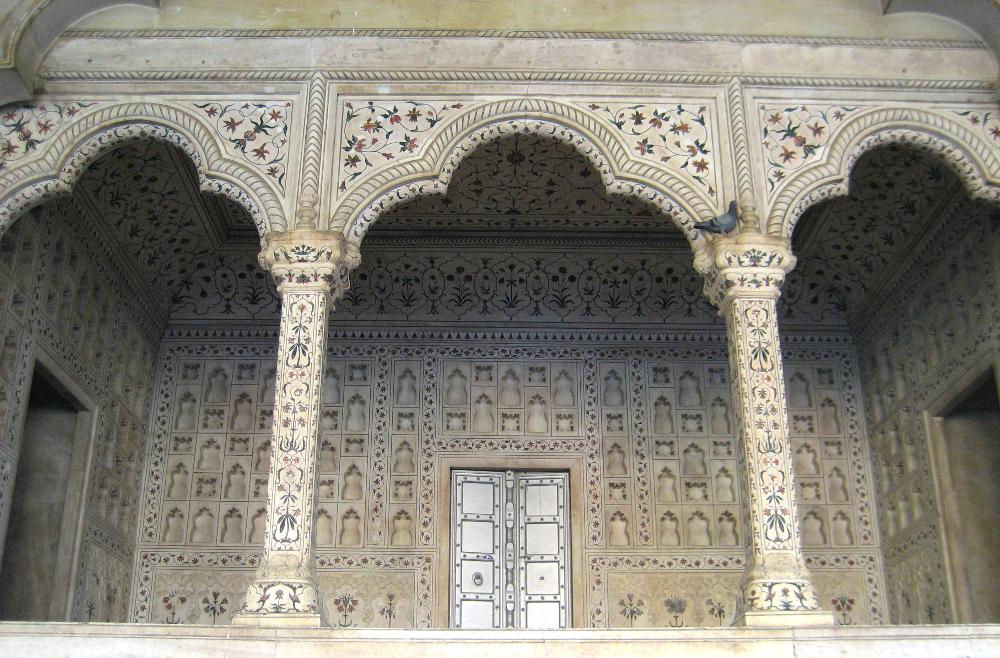
Where We Be
| Picture this with the fountain running and a small pool at the center |
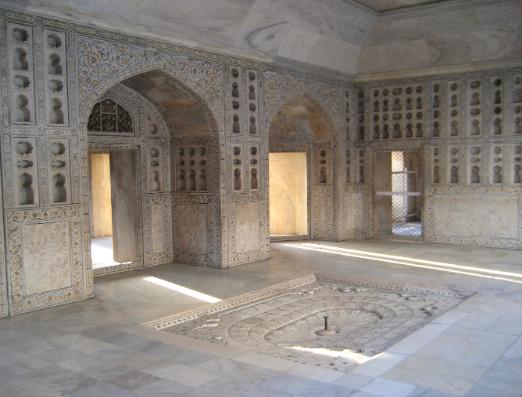
| View of a guard tower through a scalloped window |
| Intricate designs in marble are reminiscent of the Taj Mahal |
| The fort boasts massive red sandstone walls and a moat |
| The elaborate south door provides the fort's only entry point |
| We arrived in the cool of the morning when the soft light slanted in through the windows |
| Even the red sandstone part of the fort has beautiful detail work |
| The elaborate Hall of Public Justice |
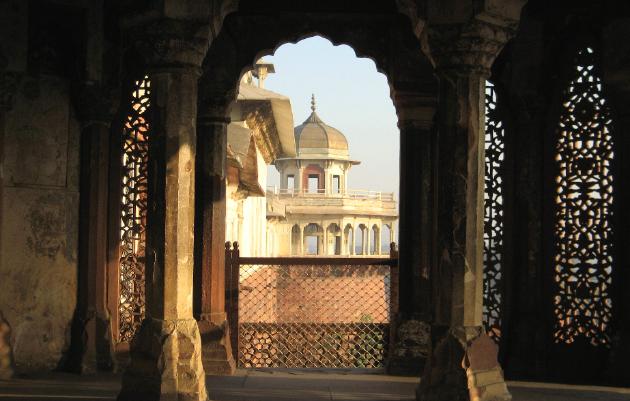
| As prisons go, this one isn't so bad. Shah Jahan's eldest daughter voluntarily shared his 8-year confinement at the end of his life. |
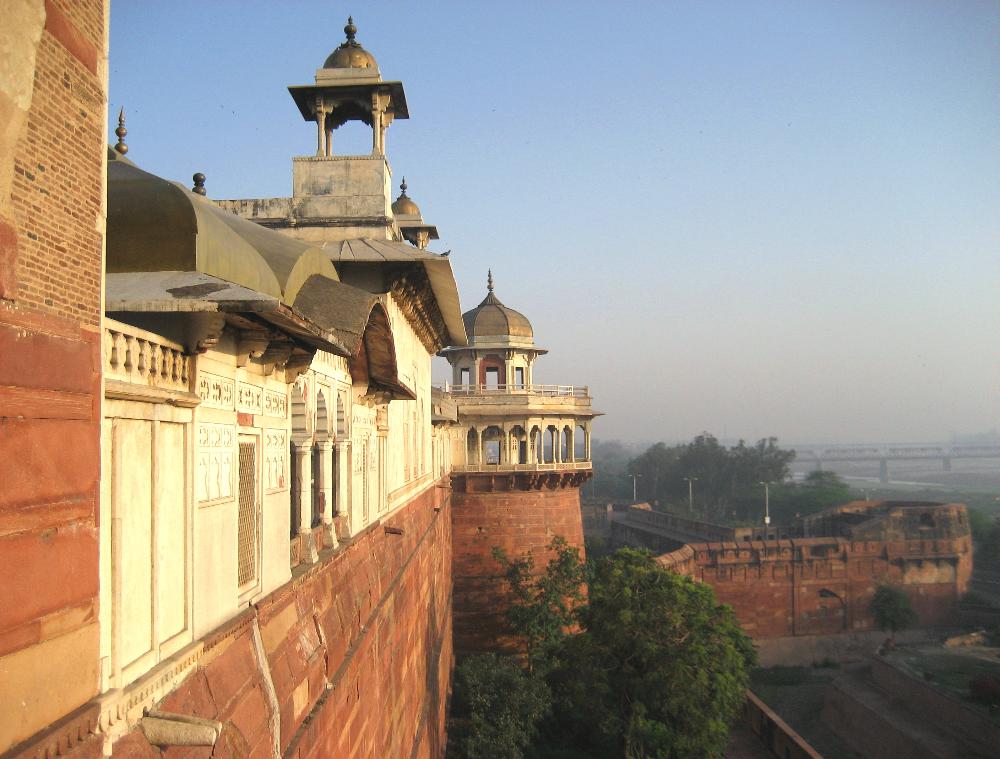
Agra Fort is a large red sandstone fort with high
walls and a deep moat. To the east it faces the
Yamuna River, which used to run directly below
the walls. It would have been a challenging fort
to conquer back in the 1400s and 1500s when it
was in its prime. Today it's best known for the
octagonal marble room that served as Shah
Jahan’s prison later in life. From here he could
stare out across the Yamuna River at the Taj
Mahal, which he had built for his beloved wife
who had passed away in childbirth. Ironically his
own son imprisoned him here for the last eight
years of his life -- in no small part because of
his lavish spending on the Taj Mahal.
Shah Jahan’s first building project was Agra
Fort. It started as a red sandstone fort but he
built the white marble palace on top. It served
as the "proving ground" for his more ambitious
Taj Mahal project later in life. Intricate marble
latticework, fountains (now dry), and delicately
carved walls make for a worthwhile visit. Green
spaces within the fort offer a quiet haven for
birds, monkeys, and other wildlife.
walls and a deep moat. To the east it faces the
Yamuna River, which used to run directly below
the walls. It would have been a challenging fort
to conquer back in the 1400s and 1500s when it
was in its prime. Today it's best known for the
octagonal marble room that served as Shah
Jahan’s prison later in life. From here he could
stare out across the Yamuna River at the Taj
Mahal, which he had built for his beloved wife
who had passed away in childbirth. Ironically his
own son imprisoned him here for the last eight
years of his life -- in no small part because of
his lavish spending on the Taj Mahal.
Shah Jahan’s first building project was Agra
Fort. It started as a red sandstone fort but he
built the white marble palace on top. It served
as the "proving ground" for his more ambitious
Taj Mahal project later in life. Intricate marble
latticework, fountains (now dry), and delicately
carved walls make for a worthwhile visit. Green
spaces within the fort offer a quiet haven for
birds, monkeys, and other wildlife.
| Agra Fort -- Agra, India |
| The octagonal balcony overlooking the Taj became Shah Jahan's favorite place for mediation and prayer |
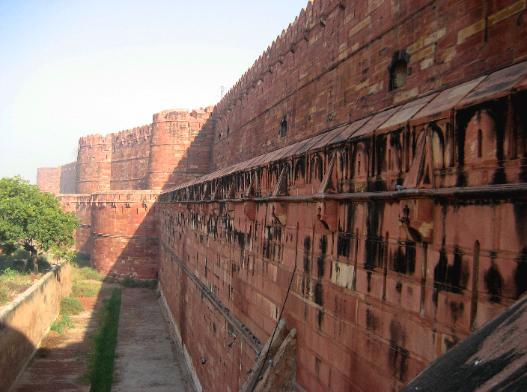
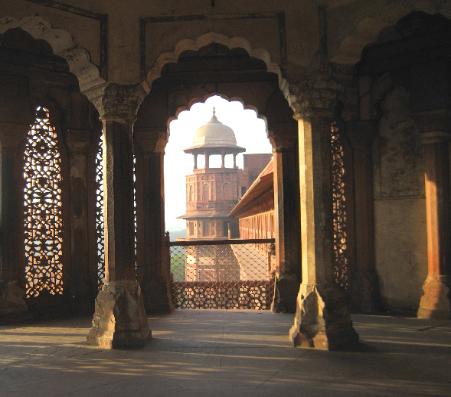
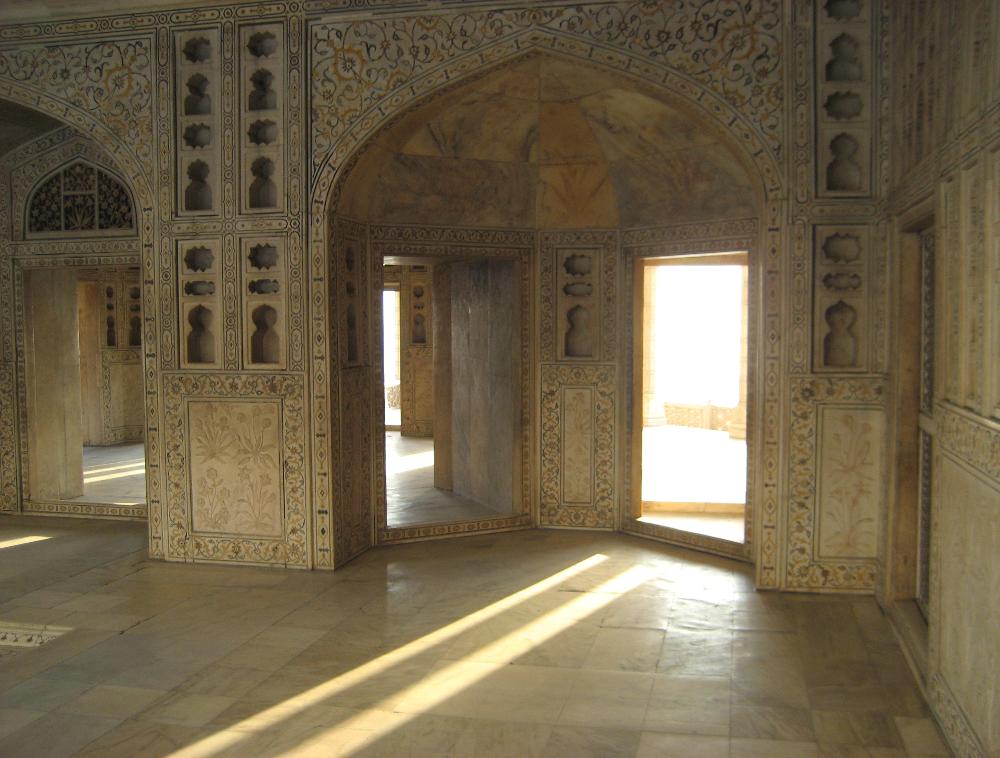
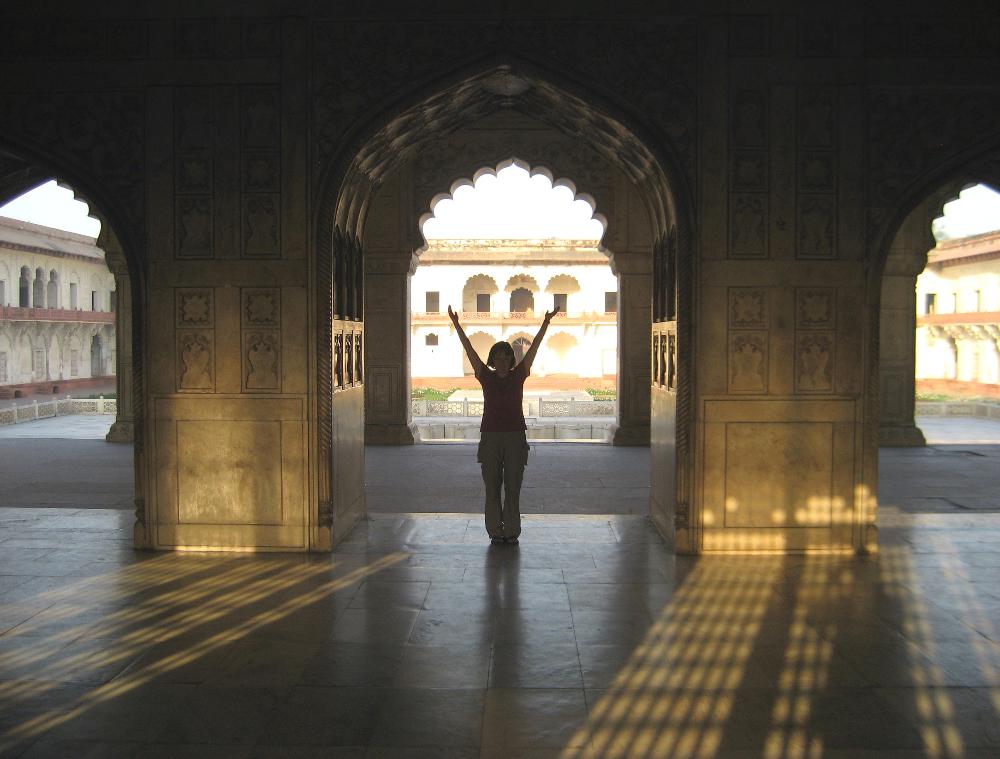
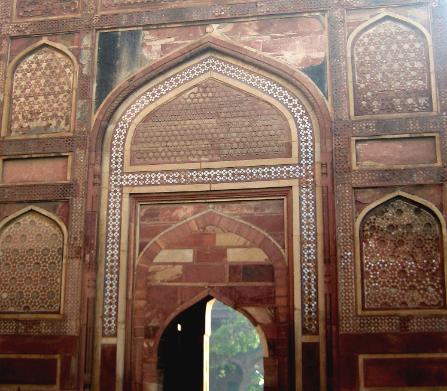
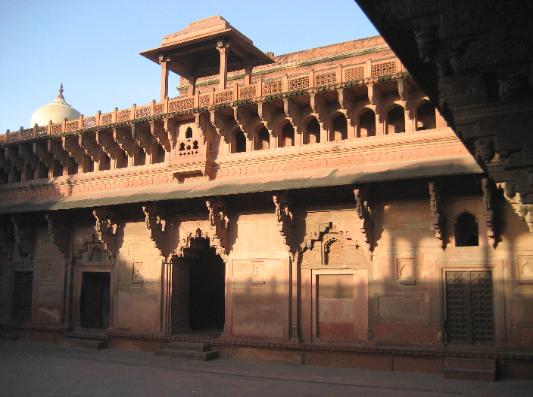
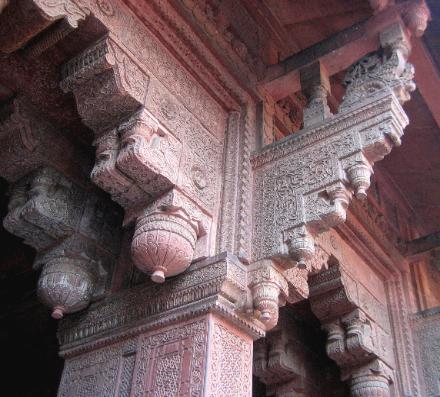
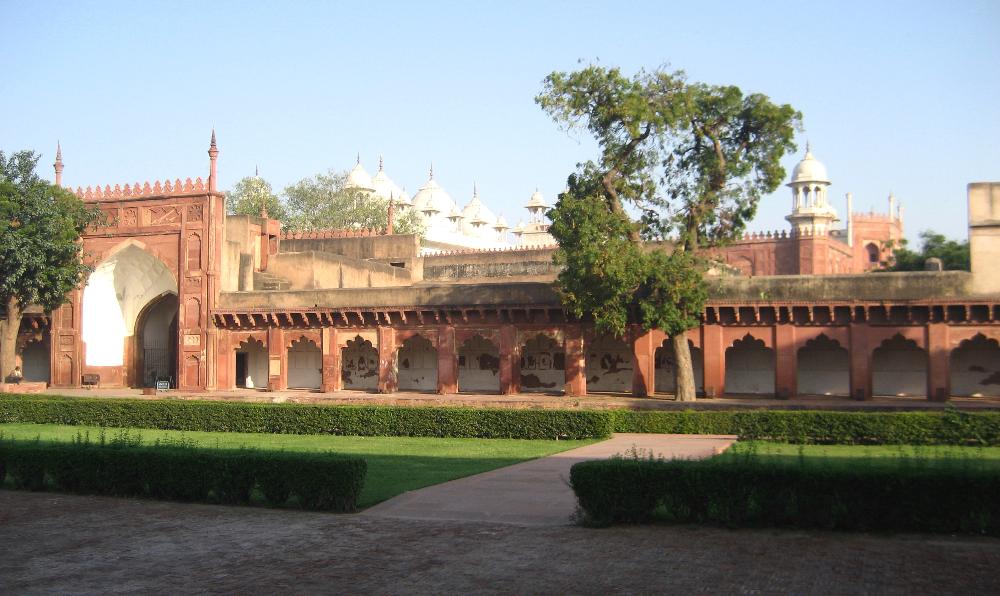
| Interior courtyards and gardens offer a quiet sanctuary |
